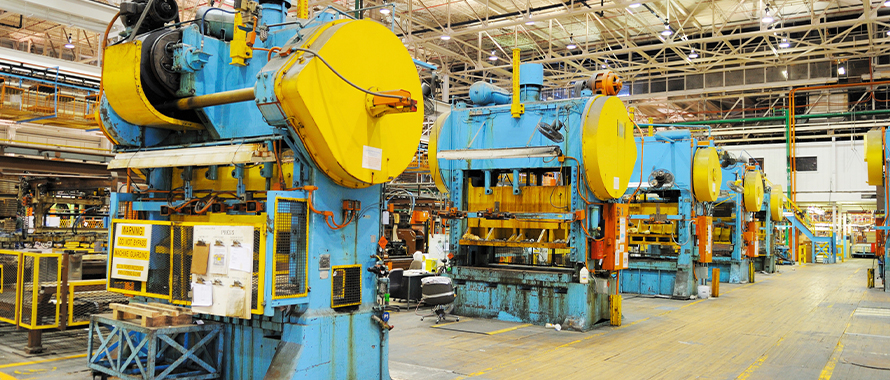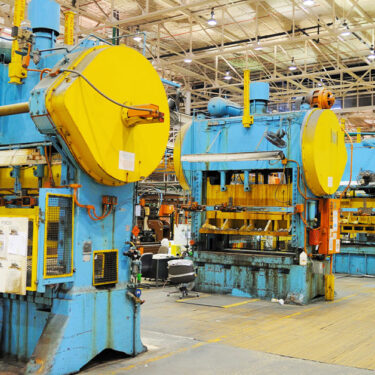Supply chain difficulties and rising costs are among the top challenges currently facing the manufacturing and distribution industry. To learn more about Manufacturing & Distribution Insurance, Crain’s Content Studio spoke with Angela Tam, Vice President, Brokerage Manager, Burns & Wilcox, San Francisco, California.
What is the greatest risk in the manufacturing and distribution industry today?
A.T.: The supply chain interruption and shipping crisis. So many products are dependent on supplies overseas and with clogged ports, container vessel snags, and trucking problems, it is difficult for any manufacturer to produce their end products without some interruption. Severe shortages of both raw supplies and workers are adversely affecting this industry.
What should companies be aware of relative to these risks?
A.T.: Costs are skyrocketing. Materials and labor costs are soaring. It is a game of supply and demand. Consumer goods have gone way up as supplies are unable to keep up with demand. Examples of shortages include paper goods, cleaning supplies, home improvement supplies, baking supplies, auto parts, computers, electronic games, and pet supplies.
Which insurance policies are most important for the manufacturing and distribution industry?
A.T.: It is necessary for anyone who manufactures, distributes or sells products to carry Products Liability Insurance. It does not matter if they are producing simple widgets or heavy machinery, there is still an exposure, and anyone in the supply chain can be brought into a claim. Products Liability coverage helps when a claim is filed against them for bodily harm or property damages and can provide financial assistance for defense costs—including defense for fraudulent claims.
Companies should also have Product Recall Insurance, which aims to “make the company whole” after the direct costs they face in a recall. Even if the product being recalled is not the product your client manufacturers, but is similar, there can be an adverse effect on their business.
Discontinued Products Insurance can also protect you from claims for products that are no longer in circulation but still can cause harm. In addition, Contingent Business Interruption Insurance, Directors & Officers Insurance, and Cyber Insurance coverage should also be considered. Premiums are on the rise due to increased litigation, jury awards, natural catastrophes and cyber attacks, but unlike other classes of business, coverages are still affordable to most companies.
A company that arms itself with proper insurance coverage can minimize negative financial impact, including loss of profit caused by supply chain challenges, regulatory and legislative changes, data breaches and the shifting demands by consumers. A knowledgeable wholesaler can assist with securing proper coverage to handle the costs associated with a claim.
How has COVID-19 affected the market for these policies?
A.T.: Companies that manufacture personal protective products, cleaning supplies, hand sanitizers, office supplies, food, paper goods, electronics, and auto parts have experienced much growth. As everyone is in a rush to get their latest and greatest new products on shelves, they may face increased liability and increased rates. What they claim about their product may be scrutinized so company websites making exaggerated statements may put them further at risk.
Delivery of supplies has been bottlenecked by shortages around the world, including delivery problems like the large cargo ship that was jammed in the Suez Canal for six days in March, which prevented an estimated $9.6 billion worth of trade per day, according to expert estimates.
Overall, carriers are restricting their underwriting appetite and increasing pricing and rates on what they will write; also, their requirements to write a risk are becoming stricter. Carriers are asking for more information up front to perform a more detailed job of underwriting and risk selection, so there may be more work for the agent to gather additional information from the insured.
What are the greatest opportunities for brokers to get into Manufacturing and Distribution Insurance?
A.T.: Medical testing kits and manufacturers of masks and hand sanitizers continue to grow. Auto and auto parts are badly needed so this market is growing rapidly. The electronic sectors all continue to thrive, including our increasing dependence on AI, our love of electronic games and our need for home surveillance. The pandemic forced most of us to work and study from home so desks, computers, and office supplies are showing healthy growth. Exercise equipment is in short supply with many unable or afraid to go to gyms. Food prices have gone up drastically with work shortages, employee shortages and high demands.
What advice would you give brokers?
A.T.: Make sure you know what you are talking about. I have seen, firsthand, agents who automatically say “yes” to whatever their clients are asking without any foreknowledge. This can get your foot in the door but not much else.
Insurance brokers and agents should be asking clients: What is your plan if you have a supply chain interruption? If there is a product issue, what would your cost be to recall and fix the problem? At the same time, it is important to partner with a wholesaler who is equally as invested in learning about your client’s product and knowing which coverage can satisfy the contract requirements.
Manufacturing & Distribution Insurance
Why your clients might need it: Protects manufacturers and distributors when a claim is filed against them — especially in a time of heavy disruption in the supply chain.
Protects against: Potential product recalls, delays in the manufacturing process.




